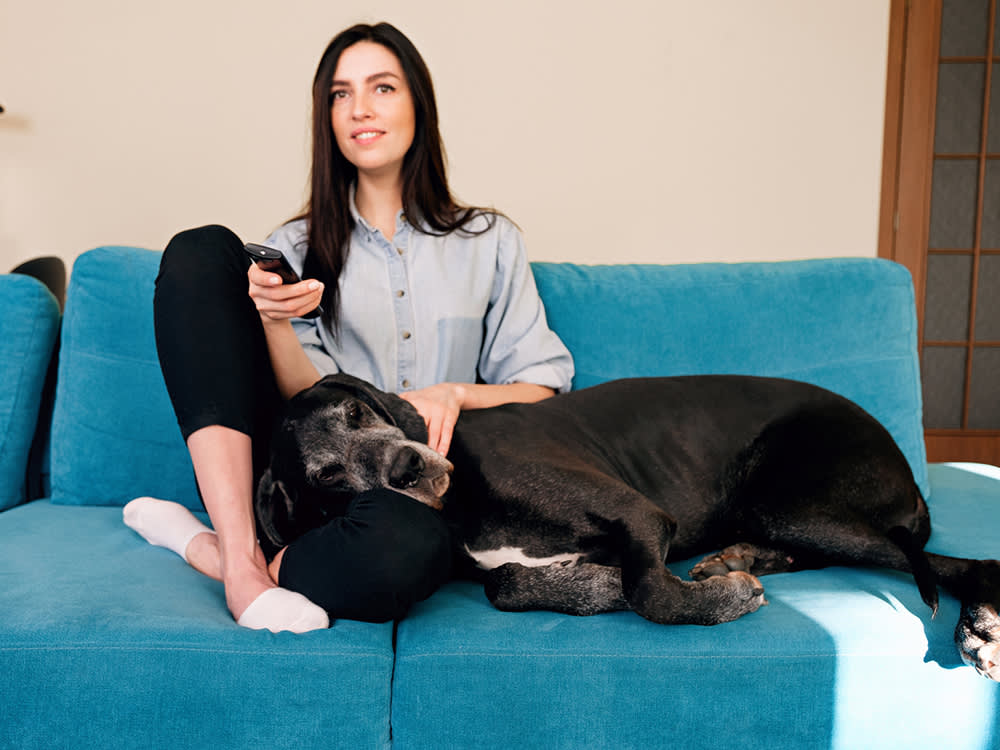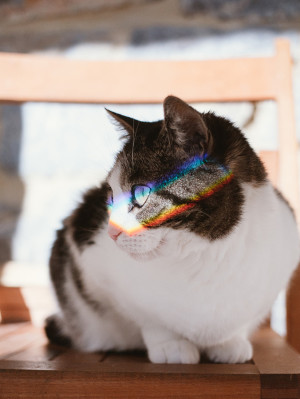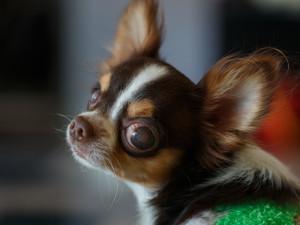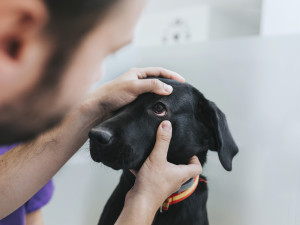What Dogs See When They Watch TV
Can your dog really see what you see when they watch TV?

Share Article
If you’ve left an episode of Ted Lasso on for your pup while you’re running errands, thinking, ‘Would this show keep my dog company?’ you’re not alone. According to a Roveropens in new tab study, two-thirds of pet parents leave the TV while they are away from home, nearly half – 46 percent – of respondents said their dog has a favourite TV show and 80 percent reported that their dog reacts to what’s happening on the screen. But are dogs really watching TV, and how much of it can they see?
How do dogs see TV?
Dogs process televisions and screens differently than humans do, but it turns out they can often recognise what they are seeing and hearing. Some dogs couldn’t be bothered to watch TV, but, in other cases, pet parents report that their dogs are enthralled by screensopens in new tab. When it comes to the subject matter, you won’t be surprised to learn that dogs like watching other dogs. Animals are naturally drawn to their own species.
However, dogs see the world differently than we do: in a dog’s eye, there are two types of cones versus three in humans, which gives them dichromatic vision (only seeing two colours). The result is that dogs do not differentiate between as many colours as (most) humans. In addition to that, dogs are much more sensitive to low light conditions.
Beyond colour, different breeds of dogs have varying visual acuity. The visual streak in the canine eye is the area with the sharpest vision. But each breed and individual dog has a different shape and number of receptors. The differences in this eye structure play a huge role in how dogs see the world.
Next up is the flicker factor. On average, humans don’t see the flickering of a television when the speed is above 55 Hertz (Hz). But for dogs who have better motion perception, they’ve been tested on rates up to 75Hz. With the UK TV broadcast standard at 50Hz, or 50 frames per second (FPS), we see this as a fluid motion, but dogs would see the television as a set of rapidly flickering images.
Nowadays, our televisions (and phones) have high-resolution pictures and clear audio, which offer our pups a clear view into another world. Sounds can also have a significant impact on a dog’s viewing of television. As most pet parents can guess, studies have found that pups were more attentive to video that includes barking, whining and sounds of praise.
Television for dogs
Whilst you might want to leave on an episode of your favourite TV show for your dog to watch, there is actually a dedicated channel for your pup programming needs.
DogTVopens in new tab launched in 2012 in the US to address the unique TV-watching needs of dogs and came to the UK in 2021opens in new tab. The 24/7 channel has more frames per second, shows colours that are more favourable to a dog’s vision and is tailor-made for stay-at-home pups.
According to DogTV, the network is “scientifically developed to provide the right company for dogs when left alone. Through years of research, specially designed content was created to meet specific attributes of a dog’s sense of vision and hearing and support their natural behaviour patterns. The result: a confident, happy dog, who’s less likely to develop stress, separation anxiety or other related problems.”
Do dogs like watching TV?
Even with a specially made channel, dogs tend to watch TV for only short bursts of timeopens in new tab, usually just glancing at the TV. But some dogs are more reactive to TV than others. Herding breeds, for example, often watch television with more intensity because of their attraction to moving objects.
Nicholas Dodman, a veterinary behaviourist at Tufts University, Massachusetts, was the lead scientist on the DogTV project. In an interview with National Geographic, Dodman explained why some dogs react to television and others don’t. “Different dogs, like people, have different personalities,” says Dodman. “Beyond biology, how dogs react to TV – whether it’s running around, barking excitedly or just ignoring it – may come down to personality or breed.”

Daniela Lopez
Daniela Lopez is a digital media specialist and long-time contributor to The Bark.
Related articles
Can Cats See Colour?
Short answer: yes – but not the way we do
![A happy looking man and woman walking their dog outside in a large snowy field.]()
10 Ways to Make Your Dog’s Life Better
Simple resolutions to boost your dog’s happiness, health and well-being all year long
![Small black pug in a red banana sitting in grass and looking up at camera, dogs eyes getting cloudy]()
Everything You Need to Know About Cataracts in Dogs
Here’s how to spot the eye condition and help your dog see more clearly
![close up of Chihuahua dog's eye with cataracts]()
Common Eye Problems in Dogs and How to Treat Them
Your dog sees you as their best friend, so keep those eyes healthy
What’s This Weird Red Bump On My Dog’s Eye?
That would be a cherry eye, and you’ll want to see your vet






